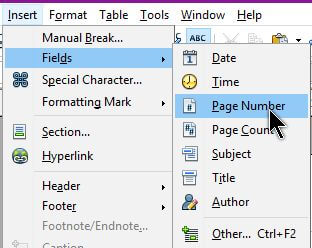

Any of the designs you choose also will include fields from your user information in .Īdditionally, take time to choose the report's page orientation. Some of the available layouts come with rather cheesy clip art, so I suggest choosing a simple design. Before you make your final selections, you can preview your choices with dummy text in the Writer window behind the wizard.

You have separate templates for the layout of the data and of headers and footers. On the fifth page of the wizard, you can select from predefined templates for the report. If you already have grouped fields on the third page, some or all of the fields on this page will be already filled in and unchangeable, for the obvious reason that grouping and sorting are almost the identical function. You can have up to four sorting orders, but in many standard cases, you will need only one, such as CompanyName. You then have the choice of arranging the order in which records are listed in the report. The highest grouping will be the field at the top of the Groupings pane, and, in most report formats, each subgroup will be indented a tab. By contrast, in a more complicated report, such as a listing of a large corporation's sales for each quarter, you might want to break sales down by departments and sales reps. For example, if the report is about the income that your business has derived from different customers, you probably will want to list quarterly income from each source by company. For most reports, you probably will want at least one group.

On the third page of the Wizard, you have the option to arrange fields into groups and subgroups in the report. Similarly, in a report on quarterly earnings, you might decide that "First Quarter" is more readable than "Q1." Note that none of these alterations changes the actual name of the field in the database, only how the field is labeled in the report. For example, you might want to change a field called CompanyName to simply "Company" or to add a space between the words in a field called LastName. This page is not strictly necessary, but it gives you a chance to display the fields on the report in a more human-friendly way. You can use the left and right arrows to move highlighted fields from one pane to another, and the up and down arrows to reposition fields in the Fields in report pane.Ĭlicking the Next button moves you to the Labelling fields page. Choose the fields to include by moving them from the Available Fields pane to the Fields in report pane. This selection affects the available fields for the report. The first step in creating a report is to select the table or query from which the report borrows its data. You also might be able to create a query that will add the statistics you want. You cannot use the wizard to run statistics on the data in the report, although with a little patience you can add a few basic ones to the report. If necessary, you can click the Help button for more information about the steps, although be warned that the help is not very detailed.įor that matter, nothing in Base or the on-line help makes clear exactly what you are doing in the wizard-namely, creating a layout to display existing data. open a database and select Reports from the Database pane, then Use Wizard to Create Report, and follow the steps outlined in the Report Wizard. However, this limitation is partially compensated by the fact that reports in Base are quick and easy to create and are displayed and printed in Writer, which gives you tools to improve their layout. The designs of its reports are simple and not overly attractive. Reports are an effort to manipulate database records into a more friendly form, including preparing them for printing or for insertion into a larger document.īy the standards of other databases, such as MySQL or Oracle, Base has a limited report capacity. In fact, to anybody who's not an accountant or a computer geek, reading databases can be downright intimidating. Or, at least, that's the case in Base, regardless of whether you view a database's tables directly or filter them through a query or form. Let's face it, databases are only minimally human-readable.


 0 kommentar(er)
0 kommentar(er)
